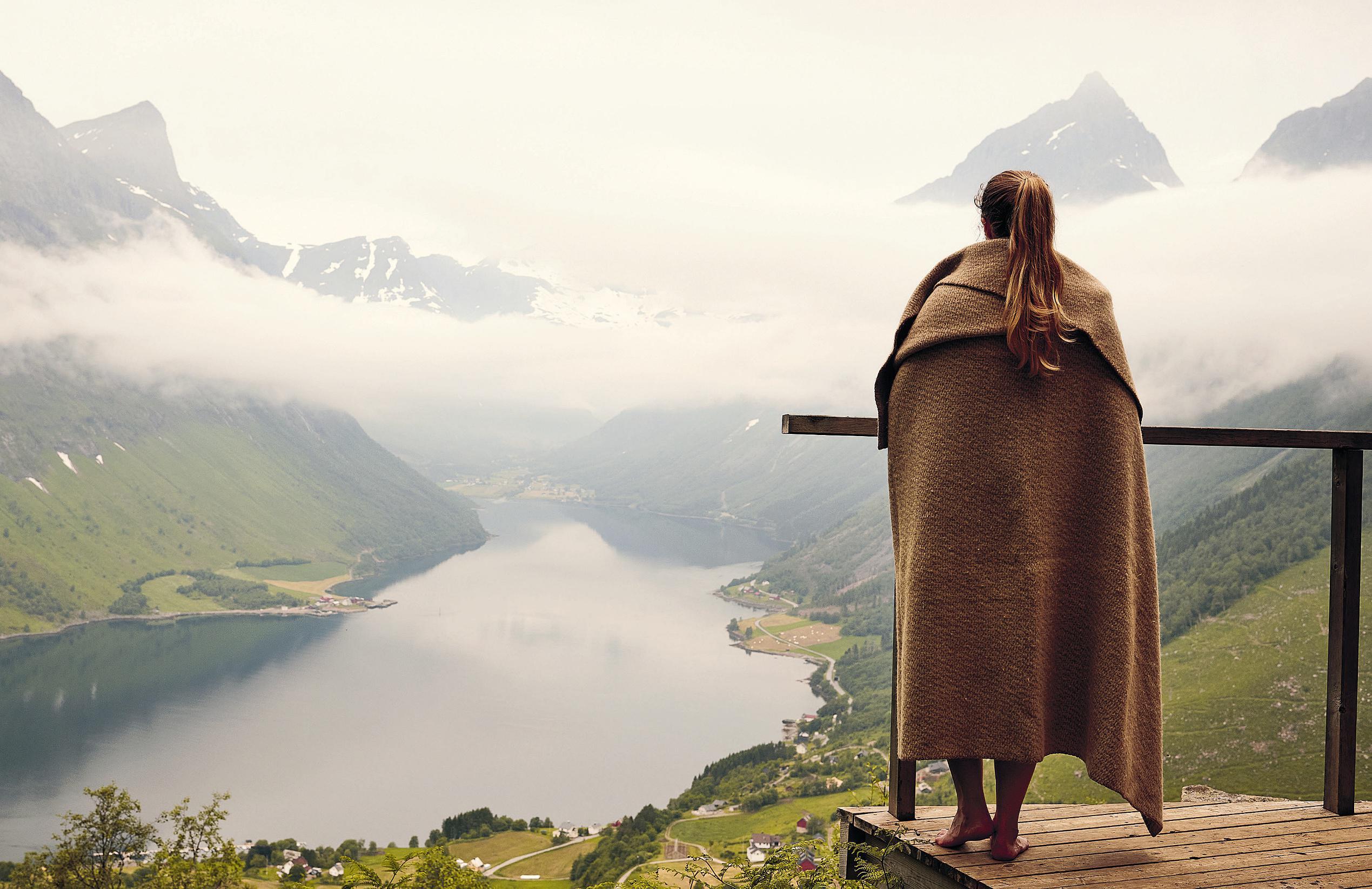
10 minute read
NORWAY Jewel of the Fjords
JEWEL OF THE FJORDS
Hotel Union Øye draws on tradition, breathtaking nature and the contributions of an entire village to create an unrivalled homey feel. Here, the story of the local community and the hotel are beautifully intertwined.
Text Per Asbjørn Risnes — Photos Benni Valsson
Hotel Union Øye is embedded in the local community–and the breathtaking scenery that surrounds it.
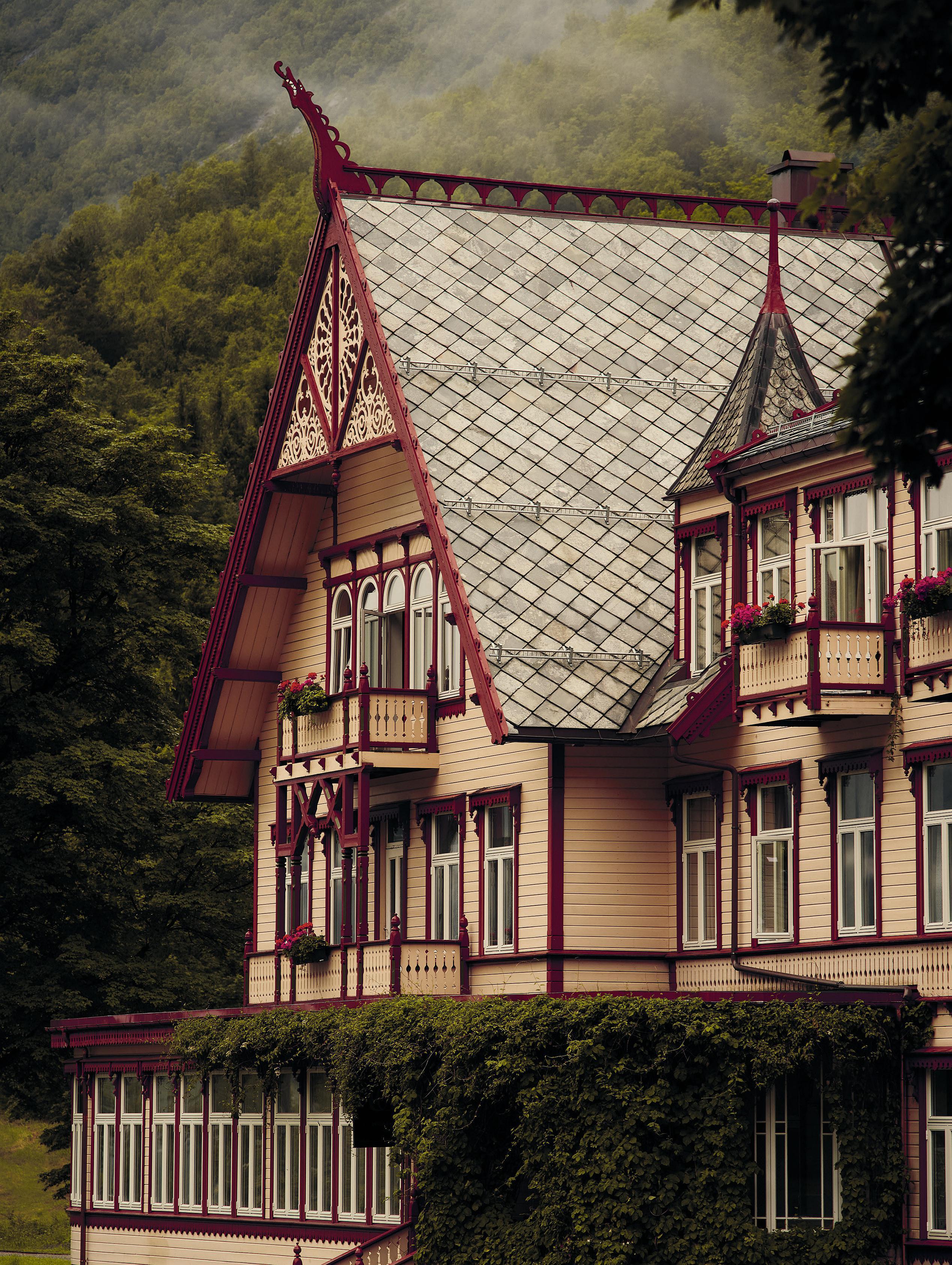
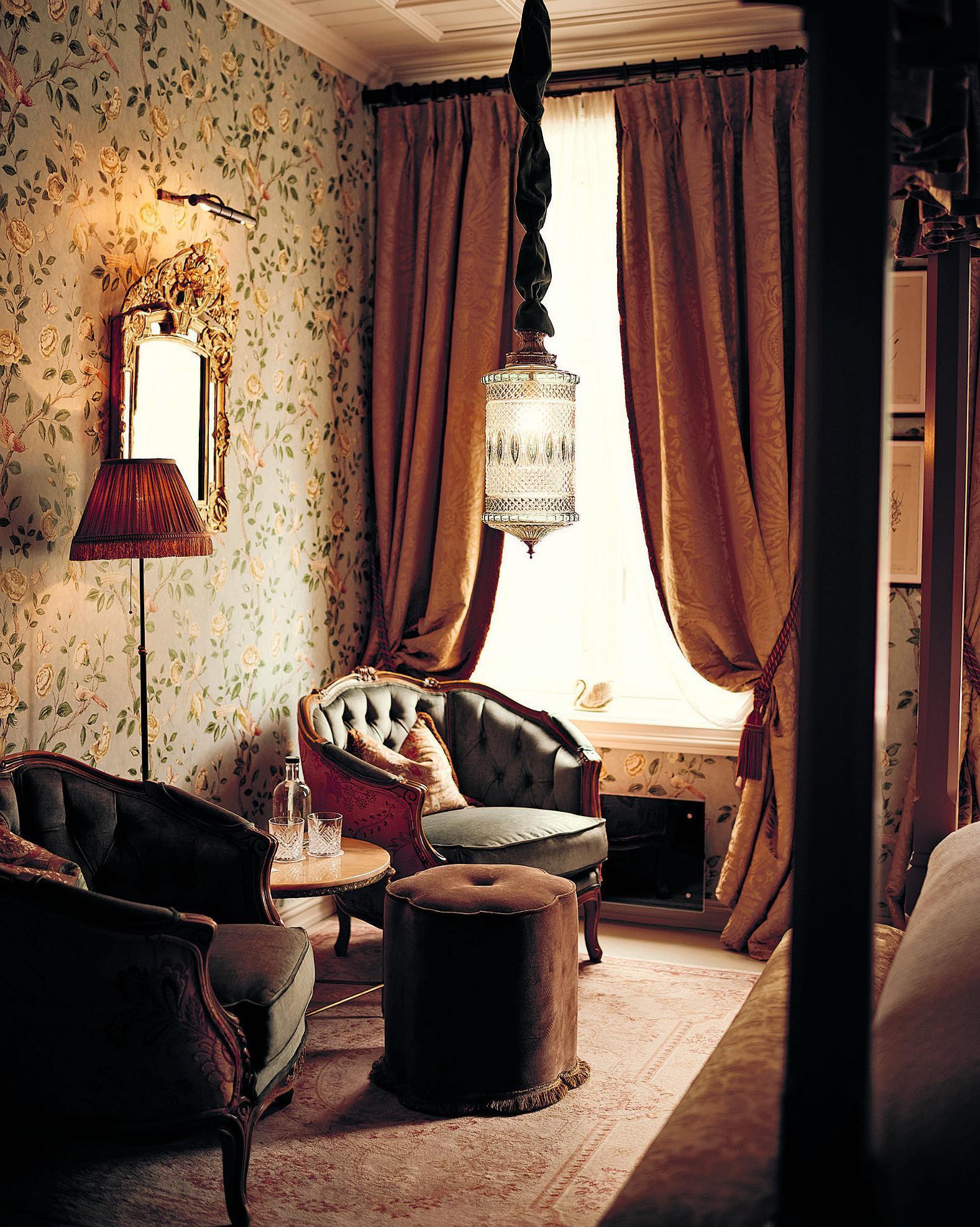
THIS IS A DISTINCTLY NORWEGIAN EXPERIENCE. There’s the fjord itself, of course: water-filled valleys carved from hard rock by rivers of ice. Then there are the mountains, with snow on their summits, and waterfalls plunging down their sides. And there are traditional wooden houses, cows, salmon jumping in the river, and unpredictable weather that ruffles your feathers. Stepping into the Hotel Union Øye, the heritage of 19th-century travel combines with modern comfort and the hospitality of an egalitarian people that always welcomes visitors. As well as a crackling fire, you will feel the embrace of a bygone era as the concierge says: “This will be your best stay ever. The whole village will see to it.” For more than 100 years, the hotel has been fundamental to the community’s economic success. Manager Mariann Øye considers all visitors her personal guests. No wonder, the hotel was once her family business–she still describes it as “more home than hotel”. Some 30 years ago, her father, Johan, and his friends, Per Ola Ratvik and Idar Nordang bought the run-down but charming hotel from a Christian organization that had used it for summer camps. They wanted to restore the grand old hotel–which opened in 1891–and draw tourists back to the village, but struggled for decades. Then in 2008, Mariann, who had played in its corridors since she was three, took over as the youngest hotel manager in the country. One year later, when the Flakk family bought the hotel, Mariann came as part of the deal. The acquisition brought economic muscle to develop the hotel and meet the needs of modern guests.
HOTEL UNION ØYE, Norangsfjorden, Norway
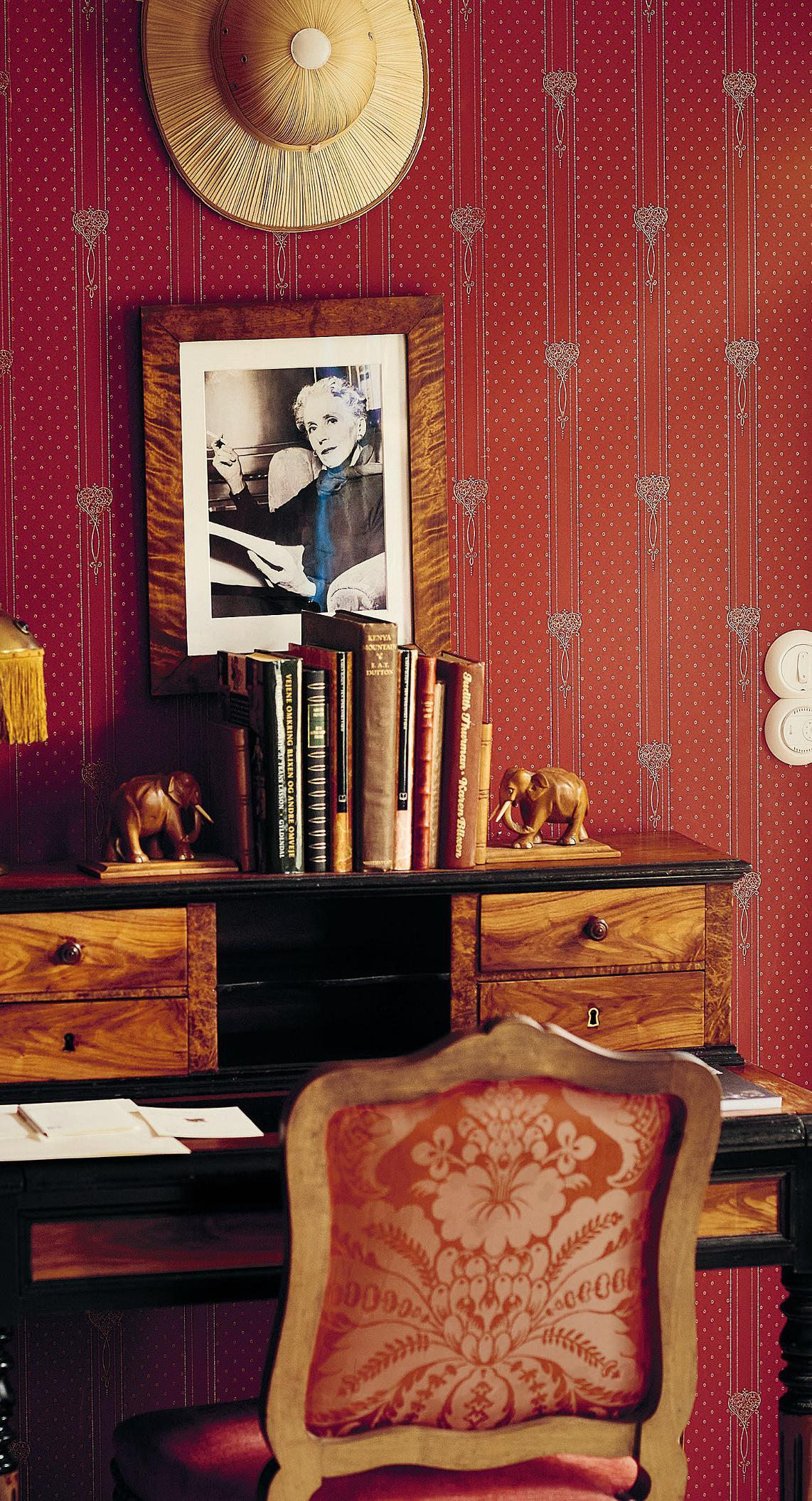
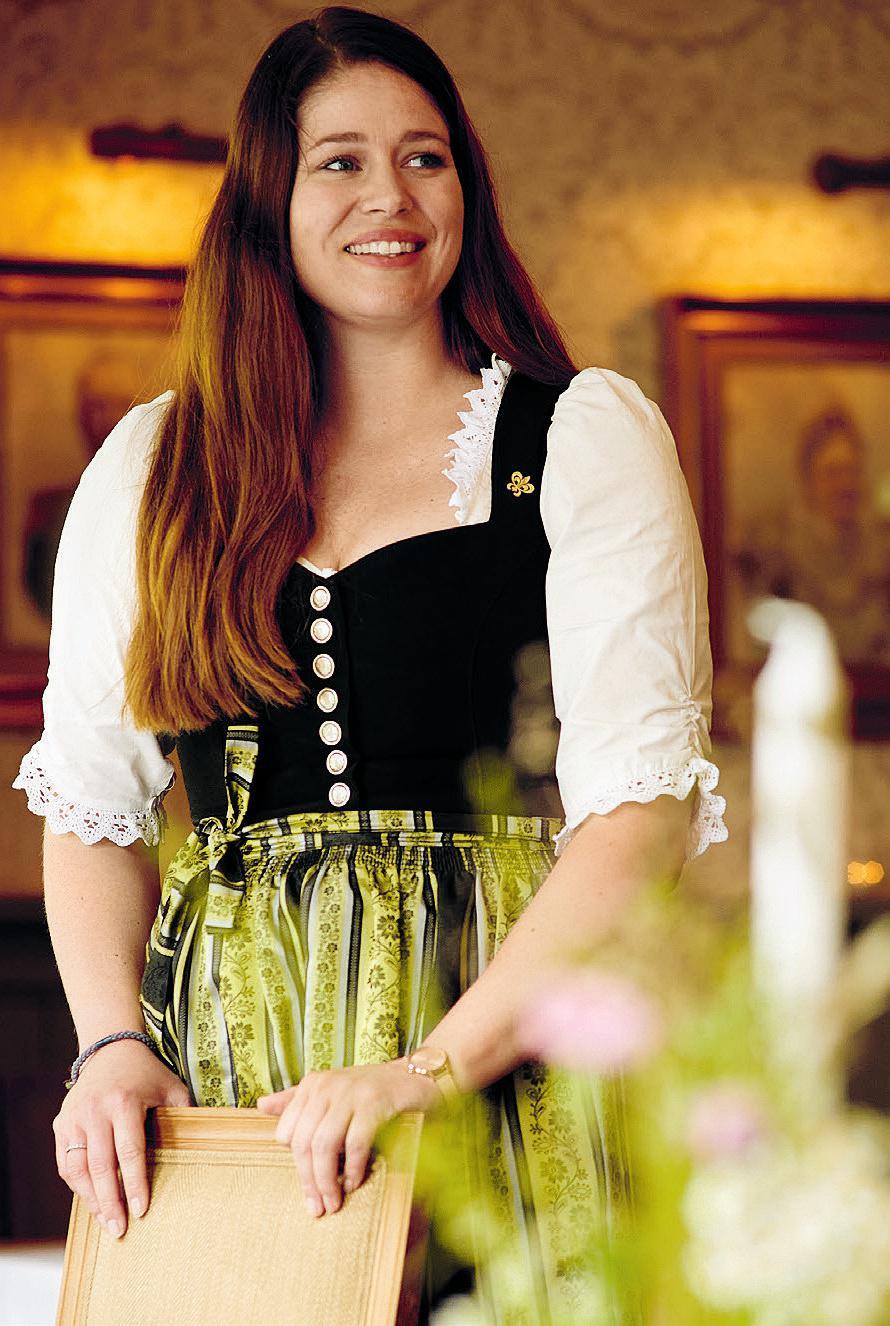
Above: Manager Mariann Øye’s father and his friends founded the modern hotel, and her nine-year-old daughter Athina–already known affectionately as ‘vice CEO’–is looking forward to running it in the future. Left: A writing desk used by Danish author Karen Blixen: the hotel has named one of its guest rooms after her.
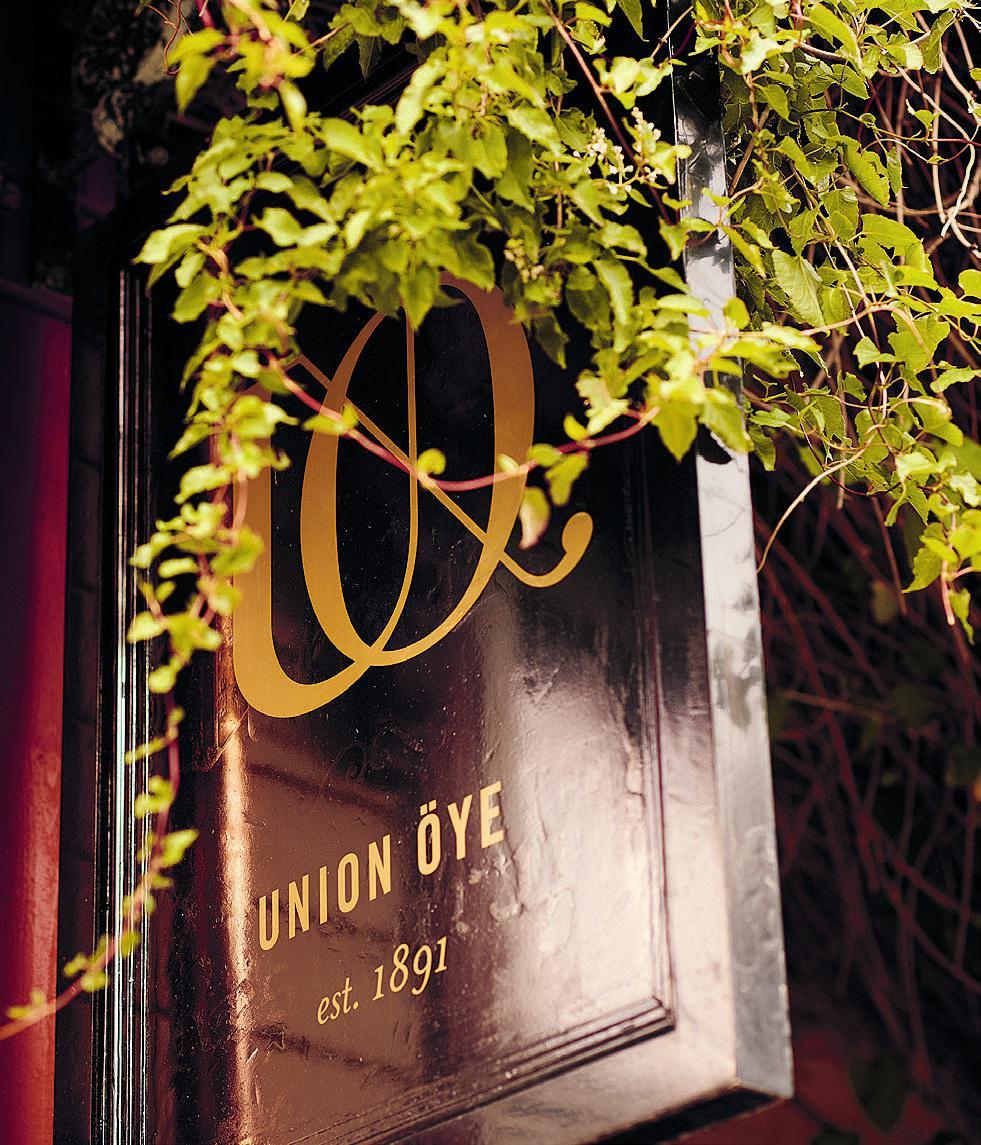
“Together with the Flakk family we saved the hotel, the village, and hopefully the future of tourism in Norway,” says Mariann. The new owners have refurbished the hotel to impeccable standards and taken great pride in the details of the place, furnishing it with antiques, adding a conservatory and guest houses built in the traditional style. The Flakk family, wearing their hearts on their sleeves, have been especially invested in how the hotel can play together with the environment and the whole village. Lately new families have been moving in and settling, expanding the community further. “The hotel has its own soul, but the people who work here have their stories to tell. In a way, they all own the place,” she says. “It is more important they know the names of the surrounding mountains than the wines in our cellar. But they need to enjoy performing on the stage that a historic hotel like this is.”
In early 1890, hotel pioneer Adolph Schieldrop, from nearby Alesund, cast his eyes over the hamlet of Øye, deep in the Norang fjord. The demand for accommodation close to the mountains was booming. So he bought two prefabricated houses, and put one up in Geiranger, and one 25 miles/ 40 kilometers away in Øye. He called them both Union hotel. For decades Øye attracted wealthy travelers: royalty, salmon barons, mountaineers, painters and writers. The German Kaiser Wilhelm traveled all over the coast in the summers between 1890 and 1908. One of his favorite spots was here in Øye. He left behind two things that still live on: a sincere tradition of taking care of guests, and the love story of Linda, a hotel maid who fell in love with one of the Kaiser’s handsome officers, Fillip. Their affair ended in tragedy after his family did not allow him to break his betrothal in Germany and he drowned himself at sea. A few weeks later Linda was found floating in the fjord. She had found peace–but not quite. Since then, she has been staying in room seven. “She’s a friendly ghost,” says Mariann. “She still wants to do the best for guests.” The fog blurs the line between the tranquil water and the green hills that run along the Norang fjord. Sigrid Håndlykken carries an inflatable kayak from the boathouse to the beach. “This is the best weather to experience the fjord. No wind, no rain, no glaring sunshine,” she says, handing out life jackets to a couple from New York. “I need to make sure that you float, the water is rather chilling, although I noticed a few hotel guests walking up from the beach in bath robes earlier.” Sigrid was made for this, growing up with her family in Longyearbyen, on the arctic island of Svalbard. Now she works for the hotel as an activities guide, taking guests on bike tours, hiking and kayaking. She does not push them to do the most extreme sports, but takes pride in tailoring the experience to each guest’s pleasure. “Just be sure to synchronize your paddles,” Sigrid says. Summer season hostess Ingrid Marie Myklebust Haaseth had promised a light hike through dense wooded hills–a quest to show us the view over the Norang fjord from a little shed, halfway up the Saksa mountain. If she was still wearing the hotel’s traditional uniform and riding boots, it would have given us a slight advantage. But today, she wears light hiking clothes and sturdy mountain

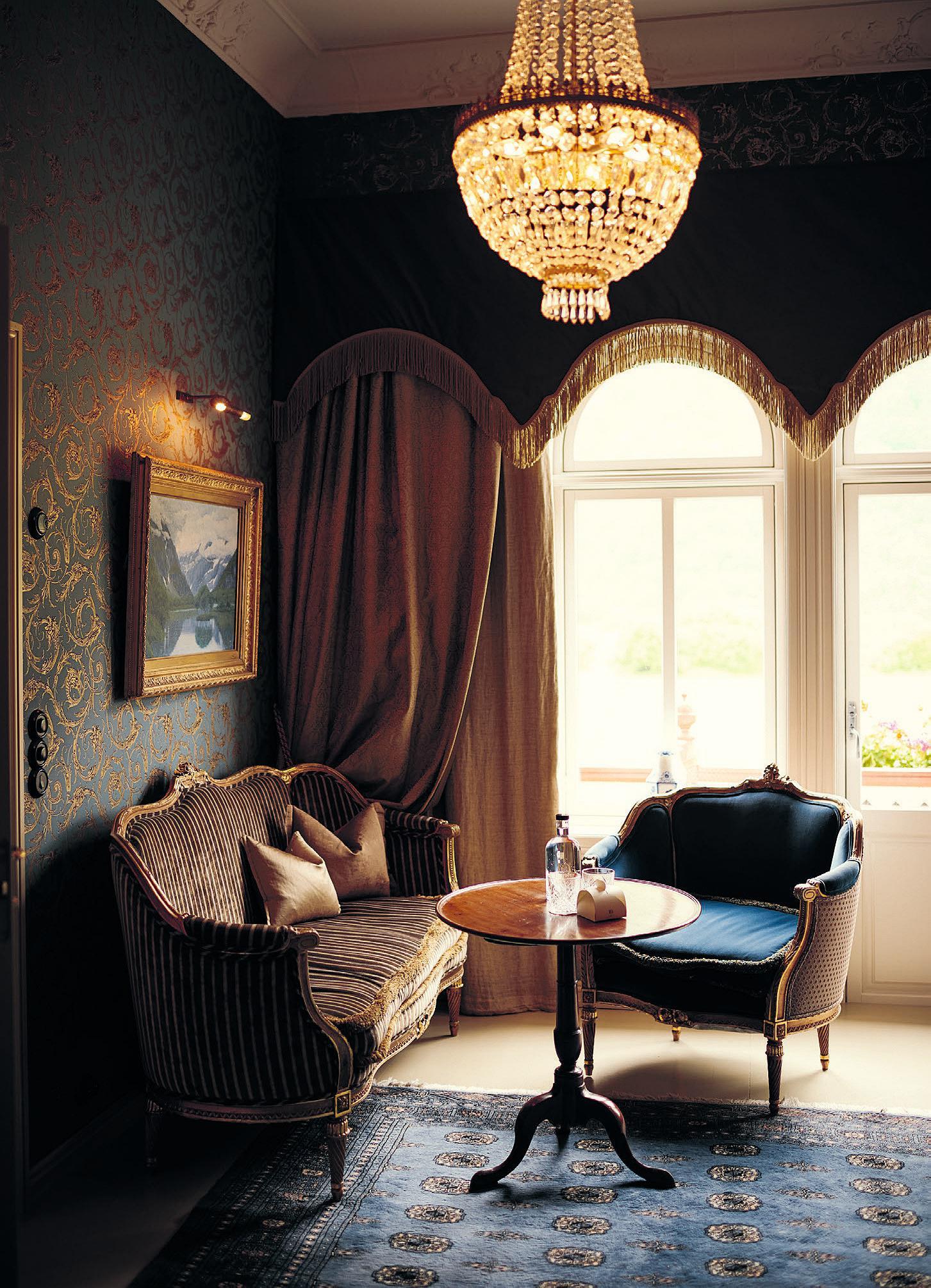

boots, climbs like a goat and walks like this was her backyard. Which, in a way, it is: her grandmother and her great grandmother both worked at the hotel, which she visited from age five. “I still remember the spooky armor in the lobby, but also sitting in the garden with my cousin planning how we would celebrate our weddings here. Now we both work here in summers,” she says. After completing her studies at law school she plans to land a job in Alesund so she can continue to visit her beloved Øye. “Here you go. Quite a nice view, wouldn’t you say?” We step out of the wood and onto the landing in front of a little shed and confront the epic panorama now revealed. This magnificent nature is exactly what the Flakk family hoped to capitalize on when opening a new chapter in the hotel’s history. They wanted to merge the local heritage with modern hotel management, in order to produce accommodation that could compete at the highest international levels. First, they modernized a former fish warehouse in Alesund into the Brosundet hotel, then built the Storfjord hotel, a few miles further into the fjord it was named after. Next their eyes fell upon a third venture–the Union Øye. “We have traveled a lot, and really appreciate personal service and relaxed luxury. We wanted to bring back all the details–and the spiritual qualities,” says Line Flakk.
Left: Union Øye has been refurbished to offer guests every modern comfort alongside its rustic charms and traditions. Below: Every corner comes packed with memories: many of the staff have long associations with the property stretching back to childhood.
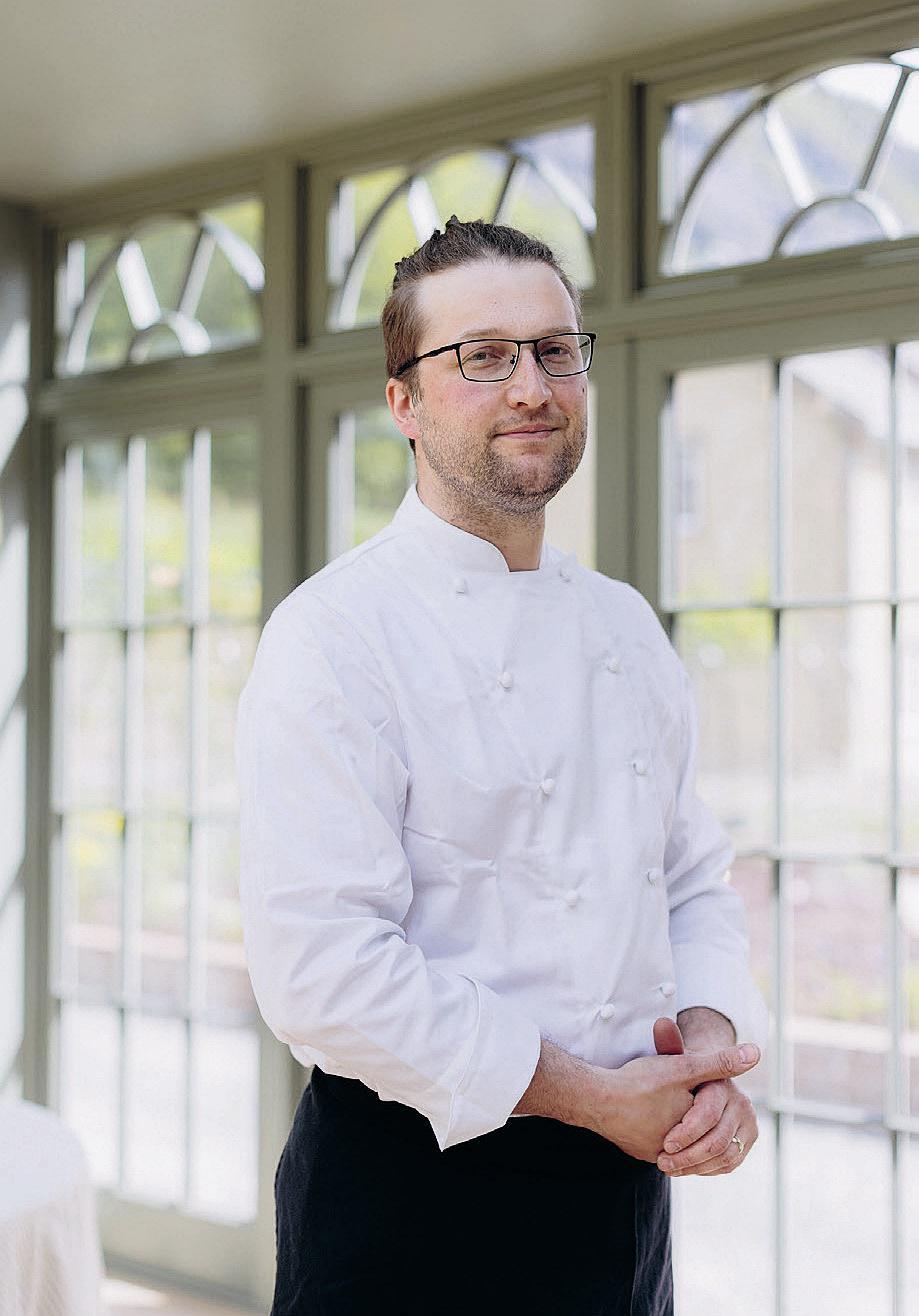
© JOHANNE NYBORG
PER RISNES Journalist “As a kid, I used to go with my travel agent father to visit Norwegian hotels. I judged them by the size of the swimming pool. At Union Øye, the lack of a pool was made up for by the beautiful fjord. I really enjoyed the 19th century interior, and the warm, informal attitude.” Having made its fortune in biogas and hydrogen, the family is now engaged in climate-friendly projects. The hotel already has a zero-waste, zero-plastic policy. Next, they are venturing into zero-emissions tourism, planning to build hydrogen stations to fuel buses and ferries and providing two black electric Porsches for guests to use. Giving us the keys to one of these, the only warnings from the receptionist were to remember to disconnect the charger and to look out for sleeping sheep. We could choose from pre-installed destinations, for instance to explore the famous Trollstigen mountain road, the Geiranger fjord or the nearby Norang valley. We could also have done the trip on electric or manual bikes, like some of our fellow hotel guests, but the silent push of 400bhp on narrow village roads, in a car with a snow-white conscience, is a pure rush–especially when combined with the breathtaking valley draped in white fog. We return for a four-course meal made from locally sourced produce. The amusebouche is a variation on a traditional Norwegian everyday meal: originally a gratin with cod, macaroni and bechamel sauce with breadcrumbs on top. This little taster has smoked haddock, croutons, and some salmon caviar. “We have world class fish right out of the fjord,” Knut Edvard Kjersem says without modesty. “And now we have world class locally farmed meat. The beef you had was a Dexter cow grass-fed across the fjord.” The chef spent his formative years with French chef Alexis Gaulthier from Michelin-starred Gauthier Soho restaurant in London. Knut recently returned to Øye after a few years at the seafood restaurant Sjøbua in Alesund. “We try to do a formal, but slightly lighter and modern, French style. This goes well with the heritage of kings and adventurers,” he says, adding that they have found a nice, fermented asparagus recipe from the old hotel cookbooks of 1913. “Fermenting was the only way to get asparagus up here all-year round.” Nowadays he can also call on fishmongers to reserve the best 44lbs/20kg of halibut out of the 1,100lbs/500kg being sent south, contact a local cheesemaker or strawberry grower–and there’s rhubarb picked just across the road from the hotel. “So, you enjoy books, huh?” a shady figure in the dimly lit library asks, continuing before I can answer: “I do too, I have a Kindle for hikes up in the mountains, but I love physical books, they are an endangered species.” Audun Haddal wears a backpack, a pair of glasses and a hotel uniform. “I’m the night porter and the hotel librarian,” he says. He runs his finger along a row of books, picking out a first edition of Henrik Ibsen. “Did you know he supposedly wrote his play Brand while staying here?” he asks, before leading us through shelves that cover mostly mountaineering literature, as well as titles by renowned authors and celebrities that have stayed here: Karen Blixen, Knut Hamsun, Sir Arthur Conan Doyle, and Edvard Grieg, to name a few. Our final encounter is with nine-year-old Athina. She does not have to come with her mother to work–she just really likes to. She even aims to take over her mother Mariann’s job as manager sooner or later. Probably sooner, you’d think, watching her tend to guests, serve coffee or tidy up, all while wearing a miniature version of the hotel’s traditional uniform. The employees call her ‘vice CEO’, or vetlesjefen in Norwegian. Last year, she even declared her ambitions on national television, when a TV crew visited the hotel: “I want to be hotel manager one day, and I want an ice rink in the garden!”
Visit Hotel Union Øye in Norway
Left: Chef Knut Edvard Kjersem enjoys access to fresh Norwegian produce, which he deploys in a lighter style of French cuisine. Right: The definition of getting away from it all: the hotel’s sauna floats on the fjord. Below: Overlooking the Norang fjord–the destination of a hosted hike guests can take up the Saksa mountain.

